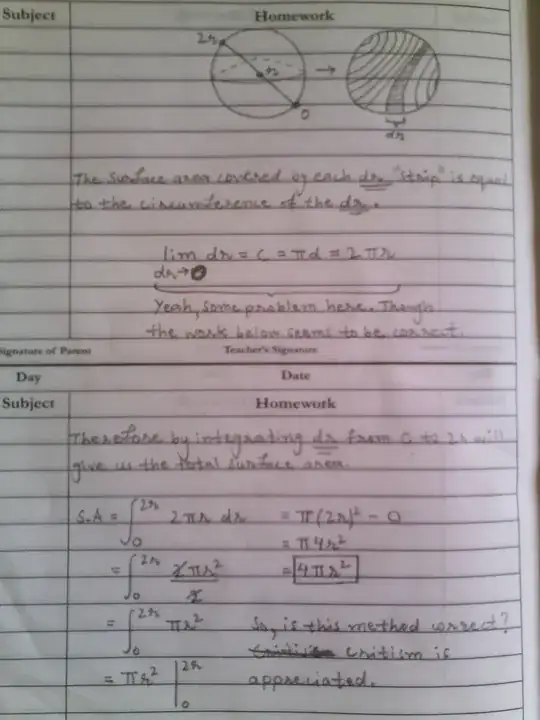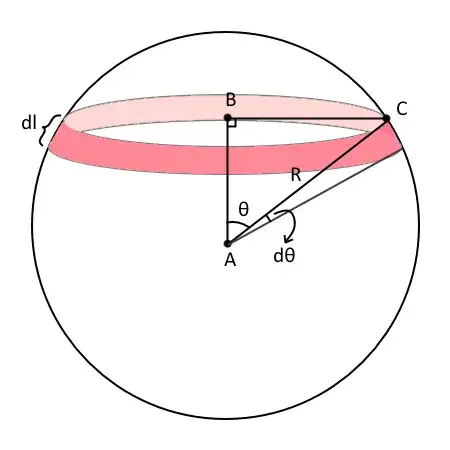I am using the alias of Sillysack Buttowski and this is my first question. I searched on other links on stack exchange regarding "how to find the surface area of a sphere by integration". They seemed overly complex to me and not what I was searching for. Hence, I decided to post my own question.
Okay, so this is what I came up with:

Now, in the image I wrote that the limit of $dr$, as $dr$ approaches $0$ is equal to the circumference of the circle or $2\pi r$. I imagine that the sphere is made up of thin slices of circles where $dr$ is their thickness. Therefore, I integrated the integrand from $0$ to $2r$ and got the correct answer of $4\pi r^2$. Now is this correct? I doubt this is. It's too simple to be right. calculus is a difficult subject. Therefore, I can only infer that my answer may be correct, however, the way I got to answer is wrong, probably.
Now, I want any criticism you have and to tell me the holes and errors of my thought processes. By the way, I am not an expert in calculus as you can see. Thanks for your help in advance!
EDIT: Okay, so the $lim$ of $dr$ as $dr$ approaches $0$ is equal to $0$. The Circumference and $2\pi r$ are not related in anyway to it. So just cut off that part over there.

